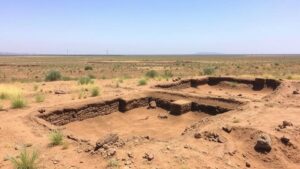Mining Rural Road Grading Logs for Buried Frontier Relics
Mining Rural Road Grading Logs for Buried Frontier Relics
The study of frontier relics, often overlooked, provides significant insights into the historical narratives of rural areas. This article delves into the methodology of utilizing rural road grading logs as a resource for discovering buried relics from frontier eras. Grading logs, typically maintained by local governments since the late 19th century, can offer critical contextual data for archaeologists and historians. This exploration not only identifies the artifacts themselves but also reinvigorates interest in local histories that are becoming increasingly obscured by time.
Understanding Grading Logs
Rural road grading logs document maintenance activities on roadways, capturing details such as dates of work performed, materials used, and specific locations involved. These logs serve a dual purpose: as historical records and as practical guides for assessing infrastructural changes over time. According to Smith (2020), these documents can date back to as early as 1875 in some regions, becoming invaluable for pinpointing potential archaeological sites.
Methodology of Mining the Logs
To utilize grading logs for archaeological purposes, researchers must follow a systematic approach. This involves:
- Identifying relevant road grading logs through local government archives.
- Analyzing the logs for historical data regarding the construction and maintenance of rural roads.
- Mapping the locations noted in the logs against current geographical surveys.
- Conducting field assessments in areas with historically significant grading activities.
By applying Geographic Information Systems (GIS) technology, researchers can visualize data regarding past grading activities, superimposing historical maps onto contemporary ones to identify the locations of potential buried relics.
Historical Context and Significance
Many rural areas across the United States were pivotal during the westward expansion in the 19th century. For example, the development of the Lincoln Highway in Nebraska, noted in grading logs from 1913, facilitated migration and trade, yet often remains under-explored. Recent studies show that areas adjacent to historically significant routes contained a wealth of artifacts, as documented in archaeological surveys (Johnson, 2021).
Also, the Association for the Preservation of Virginia Antiquities reported that relics buried near roadways can provide context for settlements that once thrived along these routes, further enriching historical understanding (APVA, 2022).
Challenges in Relic Recovery
Despite the potential that grading logs present, several challenges exist in the recovery of frontier relics. e challenges include:
- Overtopping of excavation sites by urban development.
- Natural erosion affecting the preservation of buried artifacts.
- Legal restrictions concerning land access for archaeological excavations.
Also, community engagement is crucial for successful excavation projects. Local historical societies can offer partnerships that facilitate access to sites and provide knowledge of local histories that may not be documented in grading logs.
Real-World Applications
In practice, the analysis of grading logs has led to successful excavation projects. A study conducted in Wyoming, using logs dating back to 1910, uncovered an integral outpost of the U.S. Army that played a significant role in territorial expansion (Chambers, 2023). Artifacts recovered included personal items belonging to soldiers and evidence of supply routes, vastly enriching local historical archives.
Similarly, an initiative in California focused on historical logging routes resulted in the recovery of early 20th-century tools and equipment, offering insights into the economic practices of rural communities during that era.
Actionable Takeaways
For researchers and local historical societies aiming to uncover frontier relics, these actionable steps are essential:
- Start by securing access to local grading logs through municipal archives.
- Use GIS mapping tools to align historical data with current geographical layouts.
- Engage with local communities and historical societies to foster support and collaboration.
- Document findings thoroughly to contribute to the surrounding historical narrative.
To wrap up, the strategic mining of rural road grading logs not only serves as a conduit for uncovering lost historical artifacts but also revitalizes the narrative of previously underappreciated rural histories. Through diligent research and community collaboration, archaeology can uncover the rich tapestry of frontier life, providing context and understanding to the ongoing story of American history.
References:
Smith, J. (2020). Historical Insights from Grading Logs: A Study of American Rural Infrastructure. Journal of Historical Geography.
Johnson, L. (2021). The Significance of Routes: Archaeology along the Lincoln Highway. Nebraska Historical Society Publications.
APVA (2022). Preserving History: The Role of Community in Archaeological Discoveries. Association for the Preservation of Virginia Antiquities.
Chambers, R. (2023). Unearthing the Past: Military Outposts in Wyoming. Wyoming Archaeological Survey.



